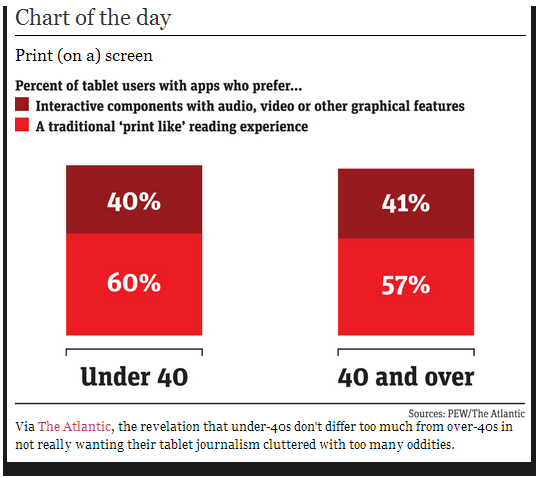Copywriting has different effects on audiences based on demographics. As Brafton reported, Millennials expect news and media to come to them directly, and these consumers are 53 percent more likely than other demographics to consider social networks as important resources for educational purposes. Millennials are also 56 percent more likely to engage with newspapers through mobile devices and interactive experiences keep these people engaged longer.
 On the other hand, older consumers prefer interacting with online media similarly to how they read print publications. According to data from The Atlantic and Pew Internet Research, approximately 60 percent of people prefer a print-like experience to something technical on a tablet application. In fact, the study’s discoveries told an interesting story – tablet apps with fewer bells and whistles appealed to audiences of all ages over content that showcased high-tech properties. This puts marketers in a bind, as studies waver back and forth, unable to show if the average American embraces technology’s offering or if he or she wants to run the other way.
On the other hand, older consumers prefer interacting with online media similarly to how they read print publications. According to data from The Atlantic and Pew Internet Research, approximately 60 percent of people prefer a print-like experience to something technical on a tablet application. In fact, the study’s discoveries told an interesting story – tablet apps with fewer bells and whistles appealed to audiences of all ages over content that showcased high-tech properties. This puts marketers in a bind, as studies waver back and forth, unable to show if the average American embraces technology’s offering or if he or she wants to run the other way.
Brands must proactively evaluate how their audiences respond to various media types. In most cases, marketers should pay attention to studies showcasing preference for or against interactive media, while almost always making sure copywriting and written custom content remains the cornerstone of high-quality marketing campaigns. Under every interactive component lies good writing, and brands that overlook content marketing as an adaptable and dynamic practice lose out on opportunities to grow their businesses effectively, even when flashy video content becomes popular. After all, companies need writers to craft video marketing scripts, and when content writers already understand brands’ value propositions, a free-flowing source of marketing material follows suit.




